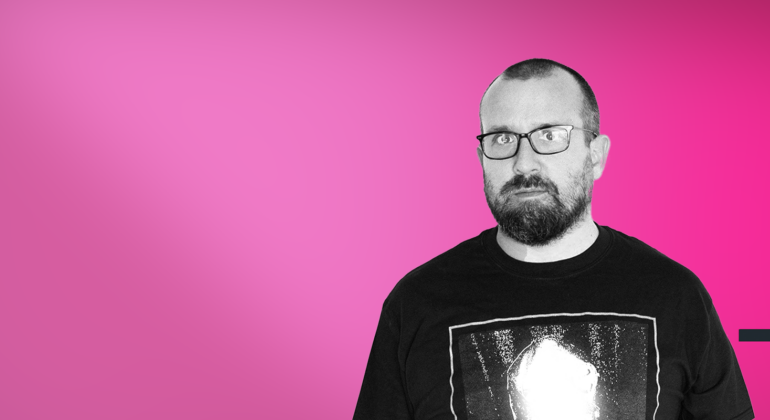As marketers, we have always been big believers in the power of brainstorming to come up with creative ideas for our clients. In fact, one of the first steps we often take with a new project is to have a brainstorm session to tap into our team’s best creative thinking. No idea is bad. Then we sift through all the ideas to come up with what we think is the best approach for the task at hand.
So, imagine my shock when, during a recent trade show keynote talk, I heard Melissa Schilling, Ph.D. declare that brainstorming causes people to come to mediocre compromises. Wow! I almost fell off my chair.
To be fair, Schilling was speaking about technology innovations, not marketing strategy. However, there are similarities, and much of what Schilling spoke to can be applied to how we, as marketers, approach the creative process.
Let me rewind a bit and provide some context on who Melissa Schilling is, and how her research can be applied to those of us seeking innovation and creativity in our marketing endeavors.
The back story
Schilling is John Herzog Chair Professor of Management at New York University Stern School of Business. She was the opening keynote speaker at SEMICON West, a semiconductor industry trade show that Kiterocket and our clients participate in each year.
Schilling’s talk focused on the key traits shared by historic innovators, based on her book Quirky: The Remarkable Story of the Traits, Foibles, and Genius of Breakthrough Innovators Who Changed the World. In researching this book, she focused on people who have innovated over and over in their lives and looked for common traits that shape them into “spectacular innovators.”
What do innovators look like?
Schilling spent a year studying Steve Jobs, and then looked for other innovators who shared similar traits. After narrowing it down to 30 people, she selected seven more innovators from throughout the course of history: Benjamin Franklin, Albert Einstein, Thomas Edison, Marie Curie, Nikola Tesla, Dean Kaman, and Elon Musk.
 Realizing that “it wasn’t a great time to be writing a book about seven white men,” Schilling said she thought about adding different ethnicities and more women. But then she remembered: “I’m a scientist. I need to stick to the protocol, I can’t change the past. I can’t add bias to the set.”
Realizing that “it wasn’t a great time to be writing a book about seven white men,” Schilling said she thought about adding different ethnicities and more women. But then she remembered: “I’m a scientist. I need to stick to the protocol, I can’t change the past. I can’t add bias to the set.”
Rather she looked for reasons why there was a lack of diversity. Ultimately, it came down to access to education. “It takes nature, timing and luck,” said Schilling. “Some people have all three things and still aren’t recognized as serial breakthrough innovators.”
After performing case studies on the sample group, Schilling found that having the potential to become a serial innovator boils down to four basic traits. Some of them are surprising, as they fly in the face of what we all think to be important for success.
A sense of separateness
All the candidates except Benjamin Franklin tended to be loners who were disconnected from the social world and didn’t feel the need for connection. The rules didn’t apply to them. Schilling found this discovery to be the most surprising; she expected everyone to be “super connected.”
This is when Schilling shared her theory about the effectiveness of brainstorming, in the context of innovation. “Get rid of brainstorming teams if what you want is innovation, because brainstorming teams cause people to come to mediocre compromises,” said Schilling. “We need to embrace weirdness.” People need to work alone, especially in creative endeavors. For brainstorming, individual time before group work is extremely important.
Self-efficacy
We all know the type: “I can do it myself, I don’t need help.” Schilling described Elon Musk as a “walking moonshot.” He sees a problem and has faith he can solve it if he just tries hard enough. Einstein, Curie, Tesla, and the others were very much the same.
At age 15, Nikola Tesla was so impressed by Niagara Falls, that he declared that someday he would harness the power of the falls. Two decades later, he built an AC power station at Niagara Falls and changed the world as we know it.
So how do we build self-efficacy? “First of all, don’t help kids do everything. Stand back and have faith; let them get it by themselves,” she said. Use “hero stories” to signal what we value and to help people learn self-efficacy vicariously. She also suggested we give people a broader scope to complete tasks, and that we celebrate bold-but-intelligent failures.
Idealistic goals
Through her research, Schilling discovered that seven out of 10 innovators have an important goal that mattered more than everything else. “You think bigger when you focus on the goal,” she explained. “It makes you more resilient, and you can endure more criticism without taking it personally.”For example, Dean Kaman decided that anything can be turned into potable drinking water and spent $50M of his own money on pursuing this goal. His philosophy: if something is important enough you should try, even if the potential outcome is failure.
Ambitious idealistic goals can be cultivated, noted Schilling. To be successful, search for the noble cause and use credible commitments that signal that the mission is more important than the process.
Timing and resources
“How much do timing and luck matter? It matters a lot,” said Schilling. She also said not to assume that resources mean money. Expertise other people have that you need is often the crucial resource. Think about Steve Jobs and Steve Wozniak.
“Outsiders can be powerful change agents,” she said. “we should embrace them or be the outsider that brings change to the field.”
Schilling concluded by pointing out that there are many people with breakthrough innovation potential. We can help by connecting people with the people who can help execute ideas.
Bringing it home
I was so inspired by Schilling’s talk, I can’t wait to read her book. The key takeaway for me was realizing that while not everyone can be a serial innovator, we all can learn from them and apply similar strategies to our creative efforts.
Essentially, as a marketing team, our goal should be to identify the creative innovators among us, better understand how we can support them in their efforts and connect them to the resources they need to succeed. Let them come up with the big ideas, and then help them run with them. Jobs may have had the idea for the iPhone. But it was his team at Apple that brought it to life.
We can also learn from studying the great innovators, and emulating the characteristics and behaviors that made them great, such as:
- Create a big, audacious (even scary) goal for you and your team to rally around.
- Don’t rely solely on the traditional brainstorm; encourage more individual creative thinking, and ensure individuals do the prep work before joining a group brainstorm.
- Pull in outside resources as change agents; invite engineers, admin support or sales team members to your next brainstorm to get perspective outside of the marketing team.
- Encourage more autonomy and allow team members to go it alone.
- Celebrate the losses as much as the wins because we all learn from those “bold-but-intelligent” failures.


